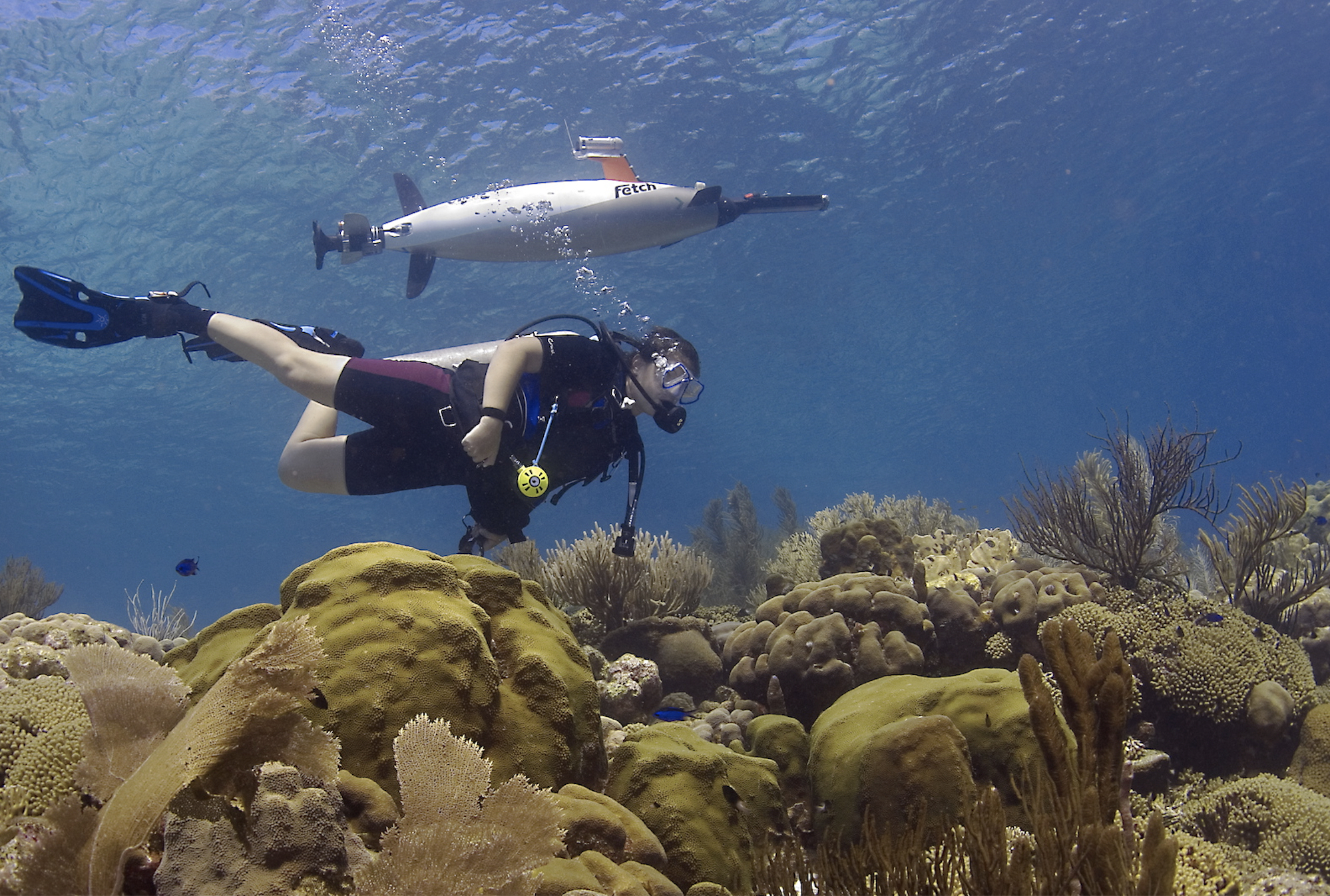Building robots to explore marine habitats

One of the biggest challenges in studying coastal ecosystems is gathering data in punishing conditions—cold, deep, choppy waters. For two decades, Mark Patterson—a dual expert in engineering and marine science—has been building underwater robots that can seamlessly explore the sea.
He and other researchers have used these robots to gather valuable data about diverse coastal habitats, from fjords to coral reefs. Patterson envisions the robots having other uses in the future, including protecting commercial ports from underwater dangers such as terrorist threats or oil spills.
Patterson’s most popular robot, Fetch, is 6 feet long and weighs 200 pounds, with a torpedolike shape that is covered in sensors. It moves at walking speed and can explore the ocean by itself for up to two days. Diving as deep as 500 feet, Fetch hums along the ocean floor, measuring factors such as water temperature, pH levels, salinity, and hydrocarbons—indicators of a marine habitat’s health. Fetch also uses 360-degree cameras and ultrasound to capture sonar images, allowing researchers to survey the ocean seafloor while counting fish populations.
Patterson has taken Fetch all over the world: to Antarctica to count the swarms of krill that are critical to that region’s ecosystem; to Iceland to study hydrothermal vents—rare pockets of hot water pouring from the earth’s crust; to the Caribbean to gauge the health of coral reefs; and to sewer outfalls in New England to track water quality. Fetch has even ambled through Louisiana salt marshes, discovering that naturally occurring bacteria were chewing up some of the oil that seeped into the marshes after the Deep Horizon oil spill.
“There are so many ways Fetch can be used to monitor and improve the health of coastal regions,” Patterson says.
Contact faculty researcher Mark Patterson.
Author: CSI Staff

